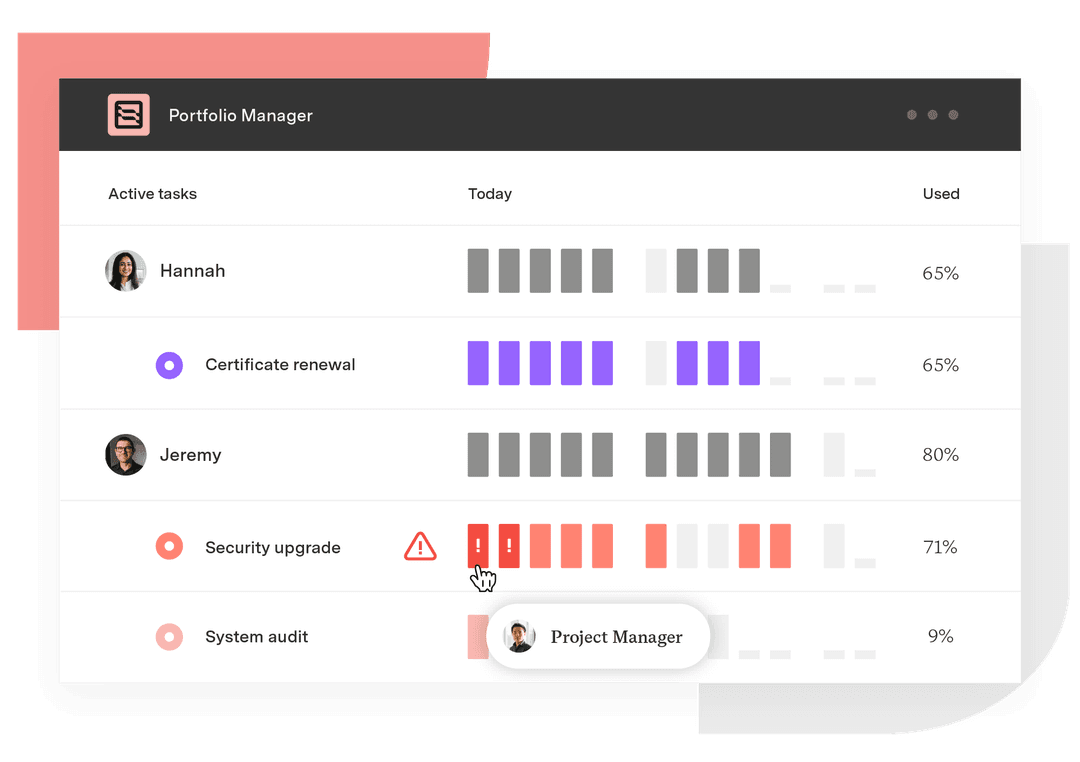The 6 basic human needs that influence team success
Tempo Team
Would you like to develop a high performing team?
Would you like to better understand what, exactly, motivates people?
Do you feel like your job could be more fulfilling but you’re not sure what’s missing?
Most of us have answered yes to at least one of these questions during our professional lives. This article explores these questions by identifying the basic human needs that govern us and how they relate to project management. By appreciating and learning about the different factors that drive us, not only will you be able to maximize the performance of your team, you’ll also be able to increase your own level of motivation.
What do people really want? (Maybe not what you think).
Some managers might still believe that money and status are the common incentives that motivate people. But newer research (and books like Daniel Pink’s Drive) have arrived on the scene to prove the opposite. In truth we’re motivated by a variety of factors, from mastery to autonomy, and we’re not as manipulative or as easily swayed as some think.
According to Human Needs Psychology, a theory developed by leadership psychology expert Tony Robbins, there are six fundamental needs that govern us:
Certainty
Variety
Significance
Connection
Growth
Contribution
Everybody has these needs, but the priority varies from person to person – and the most dominant ones will be the main drivers for an individual’s achievement.
Let’s examine each of these needs – and then see how you can increase your team’s performance based on this insight.
1. Certainty
We all have a need for certainty, safety, stability and predictability in our lives. We like to feel secure in our jobs, in our homes and in our relationships. Some people pursue this need by striving to control all aspects of their lives, including the projects they run and the people who work for and with them. They want to know that projects will work out as planned and that people will complete their assignments by the agreed deadline.
The delicate balance: When we lack certainty we tend to panic and get stressed; but when things get too certain we can feel bored and unmotivated.
To nurture Certainty: Help your team members find the best stimulating balance of certainty by keeping them informed and then providing clarity about what the project is trying to achieve, how they fit into the bigger picture and what is expected of them.
2. Variety
Just as we want certainty, we also crave change, excitement and new stimuli. Variety makes us feel alive and engaged. People who work in change management do so because of the inherent variety it provides. These projects are temporary by nature and the uncertainty level is for the most part tolerable because we know (more or less) the project’s expected end-date and what might happen afterwards.
The delicate balance: Too much variety can make us jittery and fearful because we don’t know what’s coming next; not enough variety often leads to boredom and the feeling of being stuck in a rut.
To nurture Variety: If you notice that a team member seems to embrace conflict or crisis situations, this could be a sign they’re under-stimulated and are creating their own excitement. Also, some people need to mix things up more than others. To provide the right kind of variety, make sure everyone has the right variety of activities throughout their work weeks, from spending time learning and strategizing to executing on deliverables.
3. Significance

Deep down, we all want our work to have meaning, importance and significance. It’s no fun going to a job where you feel like your existence there has little to no impact. When we work at a job with a team that makes us feel like we matter, we do better work, stay motivated and take more accountability for the work we do.
The delicate balance: This need for significance can affect people in a variety of ways, ranging from the very good to the very bad. Some are driven to help others – from acts of humanitarianism to simply mentoring and encouraging team members on the job; others put people down to elevate themselves, or are overly competitive. The list goes on.
To nurture Significance: Make regular efforts to appreciate your team members’ work, and show them that their involvement matters. Whether it’s stopping by a desk to say “nice job,” or praising someone’s well-earned success while out on a team lunch, all these gestures matter.
4. Connection

Everybody strives for a level of connection and affiliation with people around them and wants to be a part of a larger community. We want to be cared for and feel a closeness with like-minded people – be it friends, family, colleagues or an online community.
The balancing act: If we are connected 100% of the time and part of a team, a project or a culture, it will likely encroach on our need for uniqueness, and vice versa. Many people feel this conflict in that they want to be part of the team community, but at the same token they need to differentiate themselves and stand out – not least the project manager.
To nurture Connection: You can actively help your team feel connected and perform better by creating a team spirit in which everyone feels accepted and valued. Make space for individuality, and encourage learning and personal growth that fits each team member’s strengths and goals.
5. Growth
As human beings we all have a need to grow and expand in our personal and professional lives. Some people aim to reach a certain position, a financial target or a particular lifestyle; but when they get there, they become stagnant and unhappy because they’re no longer growing.
The balancing act: You’ve made it to the next stage of success, congratulations! The problem now is settling into that plateau. You want to take a rest from learning and growing – but still, you wrestle with an intrinsic desire to do so at the same time. Bottom line: We always want something to strive for; something that will challenge us to grow and expand.
To nurture Growth: Make learning and growth a clear value among your team. For example, encourage your team to take a class or attend a conference each year, read books, make time for webinars. Challenge your team by asking questions that force them to learn and grow – questions that test their understanding about a client, a project, or incorporating new tools and technologies.
6. Contribution
As human beings we have a desire to contribute something of value, whether it’s manifested through community, family, society or through the project work that we do.
The balancing act: Some projects have a very worthy cause and may help to make the world a better place to live, but when we are head-down in the details we may not always see that.
To nurture Contribution: Make a conscious attempt to help your team members see the link between their efforts and how they add value to a worthy cause. For example, if your team is developing software or working on a new building, make sure you’ve created a clear visual and mission on all the ways your project helps make work or life easier for your customers and end-users.
According to Human Needs Psychology these last two needs, Growth and Contribution are the ones that most affect a lasting sense of satisfaction and fulfillment. If we focus only the first four needs, we’ll fall short on sustaining any long-term fulfillment.
How to embed the learning: Take the time to find out which of the needs is most important to your team members. Observe, ask questions, take note of what motivates each team member to take action. But also, look inwards and ask yourself a worthy question: In which ways are your needs being met by the job you do, and how can you start to contribute to a cause bigger than yourself?













































